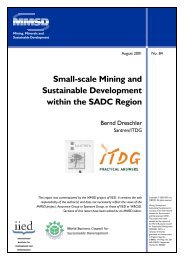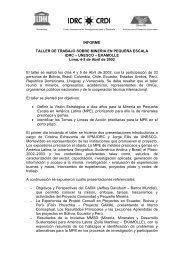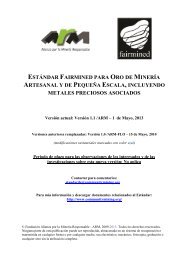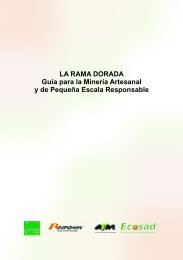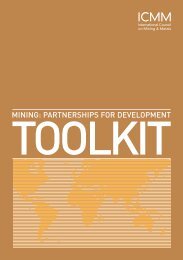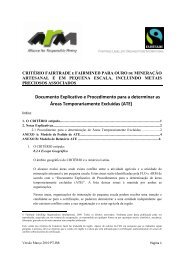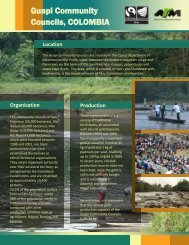A Poisonous Mix - Human Rights Watch
A Poisonous Mix - Human Rights Watch
A Poisonous Mix - Human Rights Watch
Create successful ePaper yourself
Turn your PDF publications into a flip-book with our unique Google optimized e-Paper software.
to vulnerable children, with the notable exception of children with disabilities and children<br />
in nomadic communities. 322<br />
Though the number of children enrolled in primary school has significantly increased since<br />
1998, many children of primary school age are still out of school. 323 Mali remains far below<br />
the average in Sub-Saharan Africa. 324 Access to secondary education is even lower. 325 A<br />
significant number of children have never been enrolled in school. Of those who do, many<br />
do not attend school regularly and drop out early. 326<br />
There is also a large gender disparity in education. The net enrolment rate for girls is 54.6<br />
percent, compared with 66.8 percent for boys, and only 48.6 percent of girls complete<br />
primary school, compared with 64.1 percent of boys. 327 In higher education, the gender gap<br />
is even bigger. 328 While the government has emphasized increasing girls’ access to<br />
education, the majority of the children officially out of school are girls. In 2007-2008, over<br />
half the girls between 7 and 12 were out of school. 329<br />
As illustrated above, one reason for low enrollment is cost. Parents have to pay expenses<br />
for school, such as registration fees, books, materials, uniforms, or fees for the school<br />
management committee. 330 In many African countries, school fees and indirect costs of<br />
schooling are major obstacles to obtaining an education for the poor. By contrast, the<br />
abolition of school fees has been proven to increase school enrollment and attendance<br />
significantly, particularly among the poor and among girls; it is also required by<br />
international law. 331 Other obstacles to schooling include the distance to school and the<br />
322 Government of Mali, “Programme d’Investissement pour le Secteur de l’Education 2010-2012”, pp. 15-16.<br />
323 World Bank, Le système éducatif malien – Analyse séctorielle pour une amélioration de la qualité et de l’efficacité du<br />
système, (Washington : World Bank, 2010), p. 10.<br />
324 In 2009, the net school enrolment rate at the primary level was 77 percent in Sub-Saharan Africa. See UNESCO, “Universal<br />
Primary Education,” UIS Fact Sheet, May 2011, no. 8, http://www.uis.unesco.org/FactSheets/Documents/fs8-2011-en.pdf<br />
(accessed on June 28, 2011), p. 1. In 2009-2010, the gross school enrolment rate at primary level was 79.5 percent in Mali, also<br />
significantly below the regional average. The gross enrollment rate is the number of children enrolled in primary school, regardless<br />
of their age, divided by the population of the age group that officially corresponds to primary school level.<br />
325 Ministère de l’Education, de l’Alphabétisation et de Langues nationales, “Annuaire National,” p. 88.<br />
326 World Bank, Le système éducatif malien, p. XXIII.<br />
327 Ministère de l’Education, de l’Alphabétisation et de Langues nationales, “Annuaire National" pp. 85, 91.<br />
328 World Bank, Le système éducatif malien, p. XXVI.<br />
329 Oxfam, “Delivering Education for All”, p. 12.<br />
330 Ibid., p. 19.<br />
331 Klaus Deininger, “Does cost of schooling affect enrolment by the poor Universal primary education in Uganda,”<br />
Economics of Education Review, vol. 22, (2003); Samer Al-Samarrai and Hassan Zaman, “Abolishing School Fees in Malawi:<br />
The Impact on Education Access and Equity,” Education Economics, vol. 15, no. 3 (2007), p. 370.<br />
69 HUMAN RIGHTS WATCH | DECEMBER 2011



